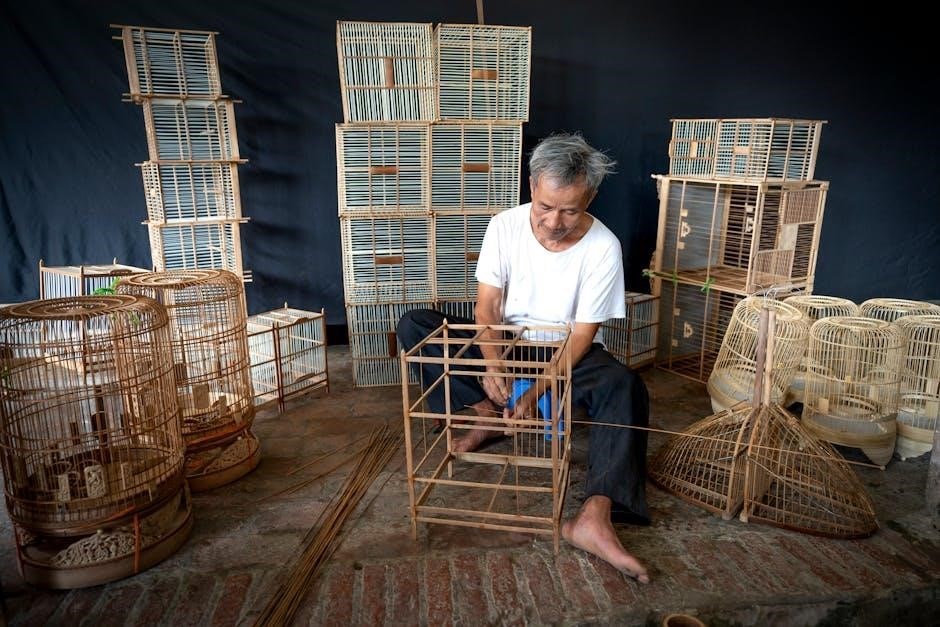
manual handling in aged care pdf
Manual handling in aged care involves safe techniques for caring professionals to support elderly residents with daily activities and transfers using proper equipment and training methods always available online․
Definition and Importance of Manual Handling
Manual handling in aged care refers to the use of physical effort to lift‚ carry‚ push‚ pull or otherwise move people or objects‚ and is a critical aspect of caregiving․ The importance of manual handling cannot be overstated‚ as it directly affects the health and wellbeing of both caregivers and residents․ Proper manual handling techniques are essential to prevent injuries and reduce the risk of musculoskeletal disorders‚ which are common among caregivers․ Moreover‚ manual handling is a key component of person-centered care‚ enabling residents to maintain their dignity and independence․ Effective manual handling also enhances the overall quality of care‚ promoting a safe and supportive environment for all․ By prioritizing manual handling‚ aged care facilities can minimize risks‚ optimize care outcomes‚ and ensure a better quality of life for residents․ This is achieved through the use of proper equipment and training methods․
Relevance of Manual Handling in Aged Care Settings
Manual handling is highly relevant in aged care settings‚ where residents often require assistance with daily activities‚ transfers‚ and mobility․ The aged care environment presents unique challenges‚ such as limited space‚ uneven surfaces‚ and varying resident needs․ Effective manual handling is crucial to navigate these challenges and provide safe‚ dignified care․ Aged care settings‚ including residential facilities and home care‚ require caregivers to be proficient in manual handling techniques to minimize risks and prevent injuries․ The relevance of manual handling in these settings is further emphasized by the need to balance resident care with caregiver safety‚ highlighting the importance of proper training‚ equipment‚ and risk assessment․ By acknowledging the relevance of manual handling‚ aged care providers can prioritize caregiver training‚ resident safety‚ and overall quality of care‚ ultimately enhancing the well-being of residents and caregivers alike․ This requires a comprehensive approach to manual handling․

Principles of Manual Handling in Aged Care
Proper techniques and equipment ensure safe transfers and handling of residents always using correct methods and procedures every time․
Guidelines for Safe Manual Handling of People
Guidelines for safe manual handling of people in aged care settings are crucial to prevent injuries to both residents and caregivers․ The internet provides various resources‚ including manuals and training videos‚ to educate caregivers on proper techniques․ These guidelines emphasize the importance of assessing each resident’s individual needs and abilities before attempting any manual handling tasks․ Caregivers must also be aware of their own physical limitations and take regular breaks to avoid fatigue․ Proper equipment‚ such as lifts and transfer aids‚ should be used whenever possible to minimize manual handling․ Additionally‚ caregivers should receive regular training and updates on safe manual handling practices to ensure they are equipped to provide the best possible care for residents․ By following these guidelines‚ caregivers can reduce the risk of injury and provide safe and dignified care for older adults․ Proper training is essential․
Industry Guidelines and Competencies for Manual Handling
Industry guidelines and competencies for manual handling in aged care are established to ensure caregivers provide safe and effective care․ These guidelines are developed by reputable organizations and are based on research and best practices․ The guidelines outline the competencies required for caregivers to perform manual handling tasks safely and efficiently․ They include assessing residents’ needs‚ using proper techniques‚ and selecting appropriate equipment․ The guidelines also emphasize the importance of ongoing training and education for caregivers to maintain and update their skills․ By following these guidelines‚ aged care providers can ensure that their staff have the necessary competencies to provide high-quality care and reduce the risk of injury to residents and caregivers․ The guidelines are regularly reviewed and updated to reflect changes in best practices and industry standards‚ ensuring that caregivers have access to the most current information and techniques․

Manual Handling Competencies for Nurses in Aged Care
Nurses in aged care require specialized manual handling competencies to care for elderly residents safely always using proper techniques and equipment available online every day․
Employee Responsibilities under Legislation
Employees in aged care have specific responsibilities under legislation to ensure safe manual handling practices are followed‚ including reporting hazards and near misses to supervisors or management teams․
They must also participate in training and education programs to develop and maintain manual handling competencies‚ and follow established policies and procedures for safe lifting and transferring of residents․
This includes using proper equipment and techniques‚ and working together as a team to minimize the risk of injury to both residents and staff․
Employees are also responsible for maintaining a safe working environment‚ including keeping walkways clear and ensuring that equipment is properly maintained and stored․
By following these responsibilities‚ employees can help to create a safe and healthy work environment‚ and provide high quality care to residents․
Employees must take an active role in preventing manual handling injuries and promoting a culture of safety in the workplace․
Reporting Manual Handling Hazards in Aged Care
Reporting manual handling hazards is a critical step in preventing injuries and ensuring a safe working environment in aged care settings․
Employees are encouraged to report any hazards or near misses to their supervisors or management teams‚ including incidents where a resident or staff member has been injured․
The report should include details of the incident‚ such as the date‚ time‚ and location‚ as well as any contributing factors‚ such as equipment or environmental hazards․
All reports are investigated and used to identify areas for improvement and implement corrective actions to prevent similar incidents from occurring․
Aged care facilities must have a system in place for reporting and managing manual handling hazards‚ and employees must be trained on how to report hazards and near misses․
This helps to promote a culture of safety and transparency in the workplace․

Design Guidelines for Residential Aged Care Facilities
Facilities are designed with safety features and equipment to minimize manual handling risks always using proper methods and techniques for resident care and support services daily;
Queensland Health Guidelines for Manual Handling
Queensland Health has developed guidelines for manual handling in aged care facilities to ensure the safety of residents and staff․ These guidelines provide a framework for assessing and managing manual handling risks‚ and for implementing safe handling practices․ The guidelines are based on industry best practice and are designed to be flexible and adaptable to the needs of individual facilities․ They cover topics such as risk assessment‚ hazard identification‚ and the use of mechanical aids and equipment to minimize manual handling․ The guidelines also provide information on training and education for staff‚ and on the use of personal protective equipment to prevent injury․ By following these guidelines‚ aged care facilities can reduce the risk of manual handling injuries and provide a safer environment for residents and staff․ Queensland Health regularly reviews and updates the guidelines to ensure they remain relevant and effective․

Training and Resources for Manual Handling in Aged Care
Online training courses and resources are available for manual handling in aged care settings always providing updates and information․
Certificate III in Aged Care and Manual Handling Training
Manual handling training is a crucial component of the Certificate III in Aged Care‚ providing students with the skills and knowledge to safely support elderly residents․ This training covers a range of topics‚ including the principles of manual handling‚ risk assessment‚ and the use of equipment to minimize injury․ Students learn how to apply manual handling techniques in a variety of settings‚ including residential aged care facilities and home care environments․ The Certificate III in Aged Care is a nationally recognized qualification that provides a pathway to employment in the aged care sector․ By completing this training‚ students can gain the confidence and competence to provide high-quality care and support to older people‚ while also minimizing the risk of injury to themselves and others․ This training is essential for anyone working in the aged care industry․